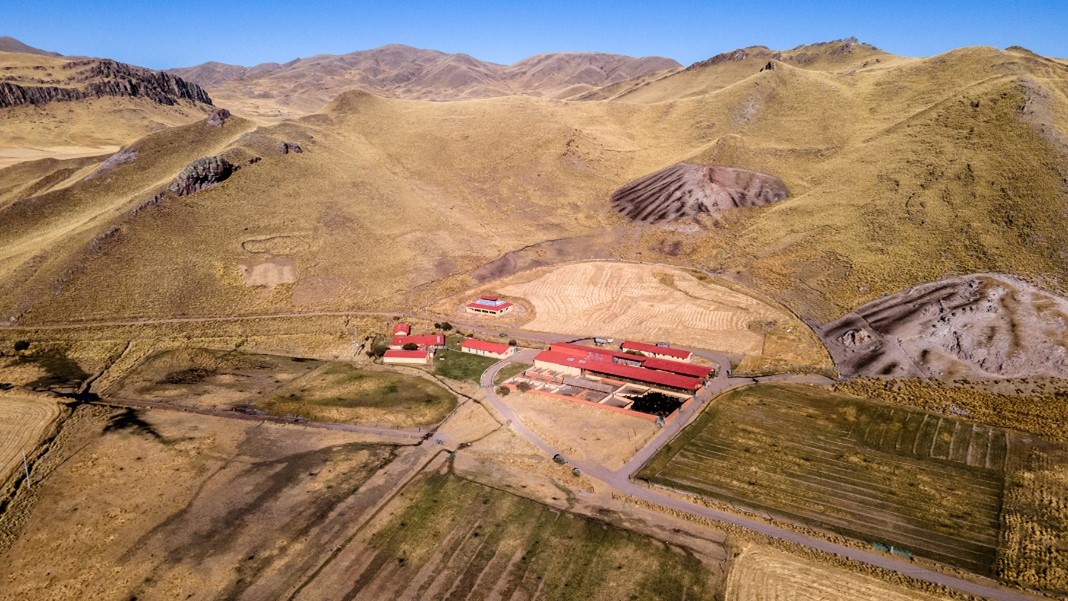The textile production in Peru is an art that is told together with its own history, where the fabrics based on the exquisite alpaca fiber stand out. The alpaca and especially its fiber has remained almost intact for centuries, preserving a great variability related to the fineness and color, looking at alpacas in the XXI century must be like looking at them more than 1000 years ago.
Fineness is the thickness of the hair, the thickness of which can vary from one animal to another. The fineness plays an important role in the textile industry, since the type and presentation of the yarn will depend on it, which will derive in the quality of the garments or accessories to be made.

At the end of the 90's the Pacomarca Scientific Station of GRUPO INCA was created, located in the highlands almost on the border between Puno and Cusco, with the purpose of improving the quality of this yarn, which without science and technology was elusive to achieve in the alpaca fiber, which, after more than two decades of research has summarized its initiatives to 3 specific objectives a) improve the quality of the fiber, b) increase the comfort of the fiber and c) conserve the population of black alpacas.
It is in the pursuit of these three objectives where TWO WORLDS meet, the world of fibers, these alpaca fibers that have been injected from numerous engineering processes to offer a yarn with a suitable thickness, twist, color and sometimes with a mixture. . that are offered through AMANO, and subsequently creatively woven and created garments and accessories that the skillful hands finish giving to life.
And on the other hand, the world of genetics, this other world that is also woven from the biological threads of genes and proteins, these are packaged within the nucleus of each cell, whose main molecule is DNA - deoxyribonucleic acid, where all the hereditary information of the alpaca is kept, and from here in the reproductive processes, with the appropriate information, matings are carried out to weave new lives, alpacas with a desired fleece fineness, color, and comfort.
Both worlds (textiles and organic) can unknowingly converge to offer the ideal product that gives sustainability to the alpaca fiber chain. This is where Pacomarca intervenes. When we started the project, we found that searching for the best fiber with the desired textile characteristics is a process that in animals is transmitted from generation to generation, a process called genetic inheritance.
So, to select the animals that produce the best fiber, it is not only a process of breeding and conservation, but it is a work that involves the daily record of activities, the record of the genealogy of the animals, records of performance such as weight of fleece, fiber diameter, percentage of medulla (an internal structure in the hair), or the intensity of the color of the fleece measured by a colorimeter.
The convergence of both worlds then occurs simultaneously, measuring and analyzing the fibers that each animal produces expressed as Phenotype, to predict the genetic load that the animal has in its DNA – Genotype, in friendly words it would be “observing what is outside to predict “what is inside the alpaca.”
The products offered should not only be counted as a work of engineering, they should be seen as a holistic work that begins in the mountains and reaches a closet, but in between there is a commitment to scientific and responsible work. We have assumed that responsibility as a way of working in all our processes.
To establish the union of these worlds, Pacomarca began by meticulously recording all the activities of the animals, this gave rise to the most reliable and powerful database in the world, which has contributed to numerous scientific and technological works, with a significant contribution to the textile industry, to the transformation processes, to the production processes, but above all with a contribution to the alpaca families that benefit from this resource.
We can count one of these contributions as a satisfactory and sustainable experience by sharing broodstock from the Pacomarca Scientific Station with alpaca farming families. The raising of alpacas due to the wild conditions where it is developed has little knowledge about biological processes or genetic inheritance, but they understand that if we increase the number of the best animals, their economic income from the sale of their good fiber would also increase.
So you have to ask yourself: How does this improvement influence when Pacomarca shares breeding stock? The answer might seem obvious: animals from Pacomarca have genes with good textile characteristics in their DNA. However, there is much more to this, groups of alpacas within families, lacking follow-up in their genealogical records, do not allow control over mating to create new offspring, this means that there is a high degree of consanguinity, from Consanguinity in any biological population is relatively harmful, because it reduces fertility rates, increases pregnancy loss rates and increases mortality rates in the first months of life.
An efficient way to reduce these problems in herds is to introduce “new blood”, which is unrelated animals. These animals are the ones that Pacomarca shares every year, which in addition to mitigating the deleterious effects of inbreeding, have a relevant contribution to the production of fine fiber.
Not only have we woven biological fibers with science and technology in animals, we have also woven strategic alliances with alpaca families, and above all, we have developed the products that we put in our stores, which through AMANO are offered to be finished. of knitting in the right hands – Our Clients.
Alan Cruz
Gerente de Desarrollo Genético – Pacomarca
Inca Tops S.A.



